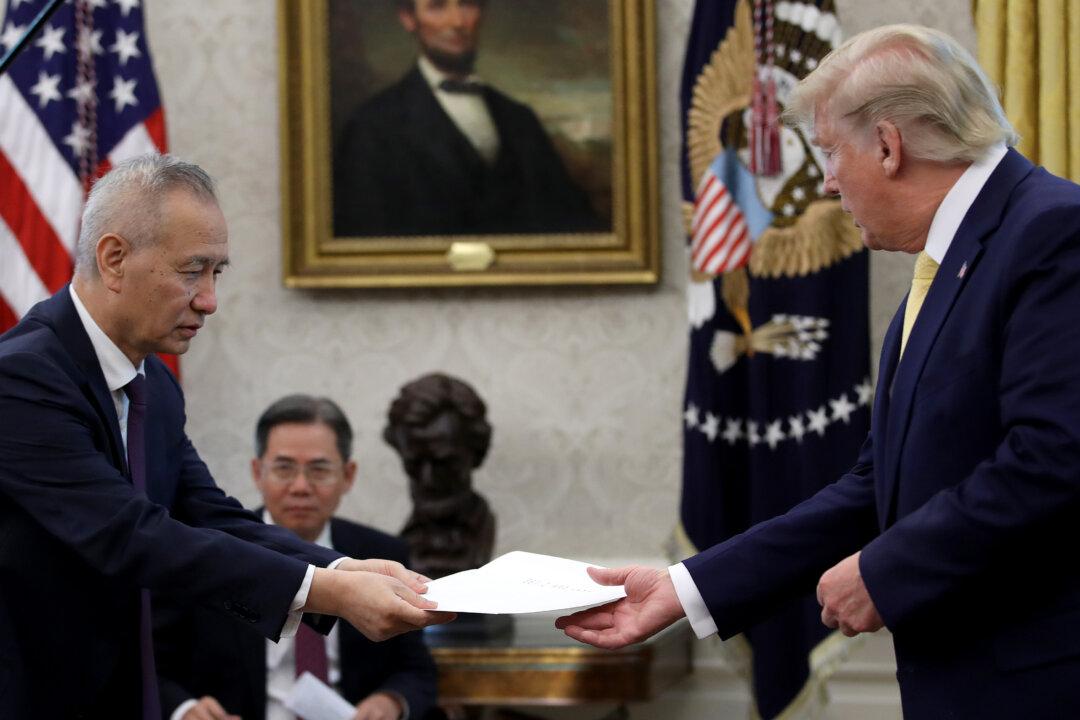Since U.S. President Donald Trump announced the first phase of a trade deal struck between the United States and China, Chinese state media have kept their news coverage to a minimum, simply noting that the deal was “prudent” and a sign of progress.
Trump said at the White House on Oct. 11, together with Chinese Vice Premier Liu He, U.S. Trade Representative Robert Lighthizer, and U.S. Treasury Secretary Steven Mnuchin, that a deal had been reached in the first part of a series of agreements.





